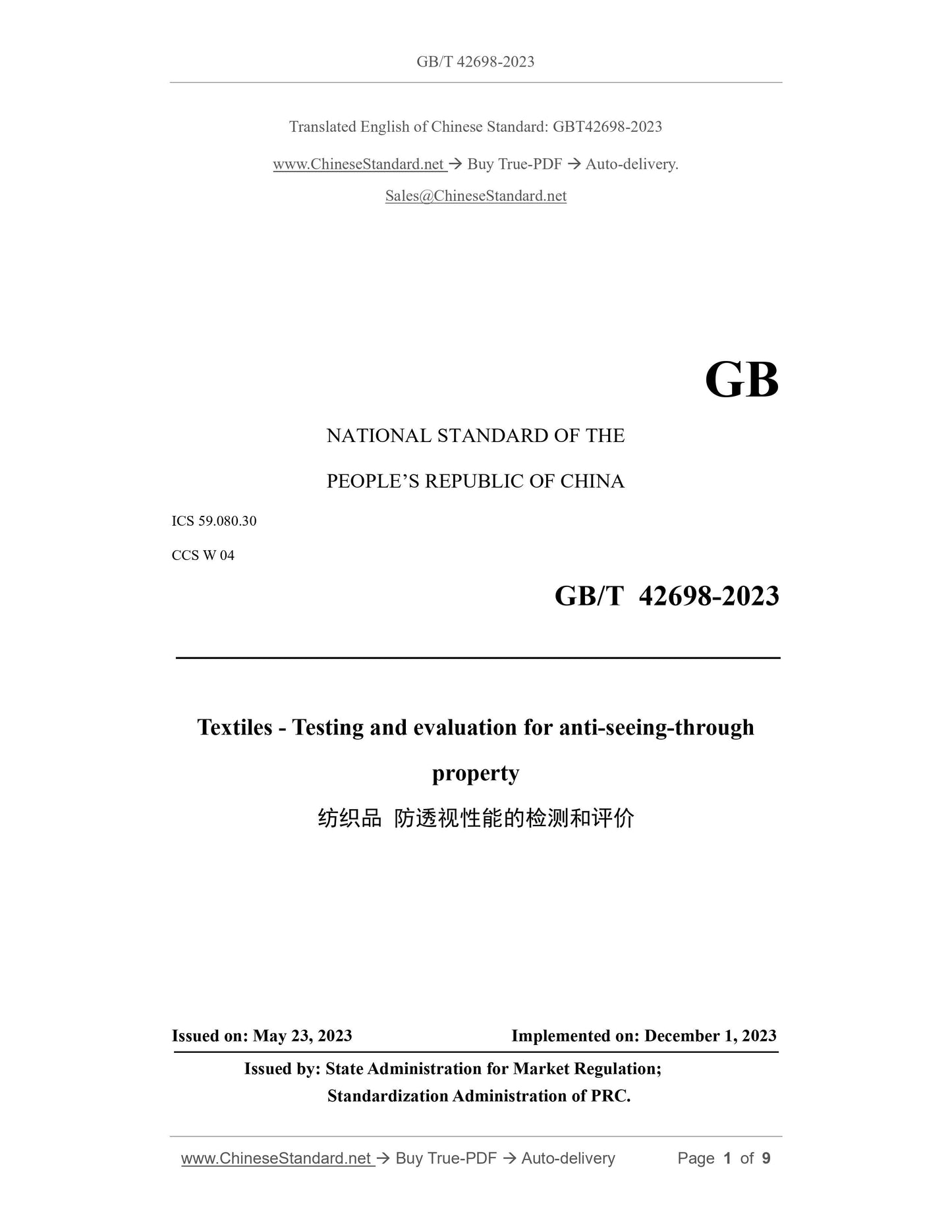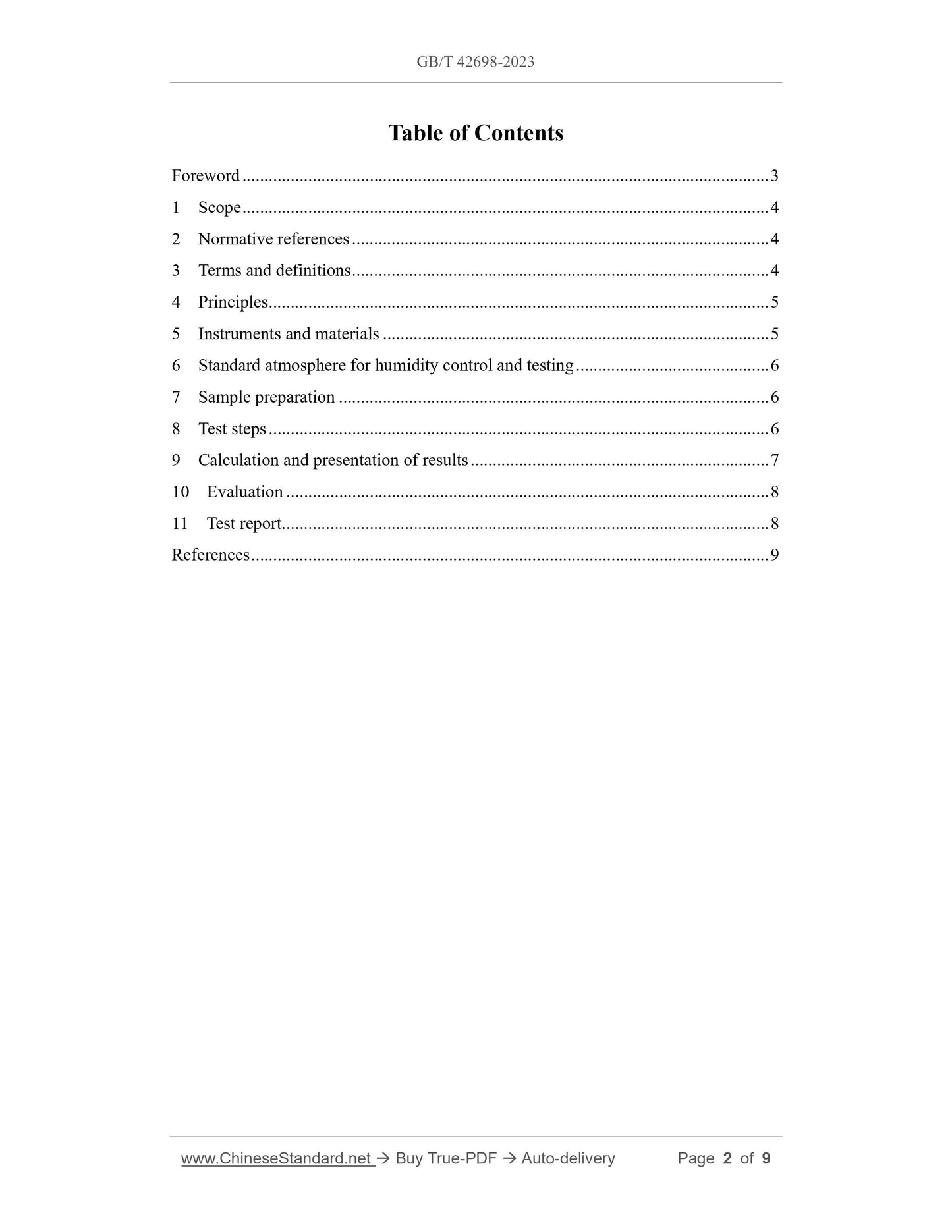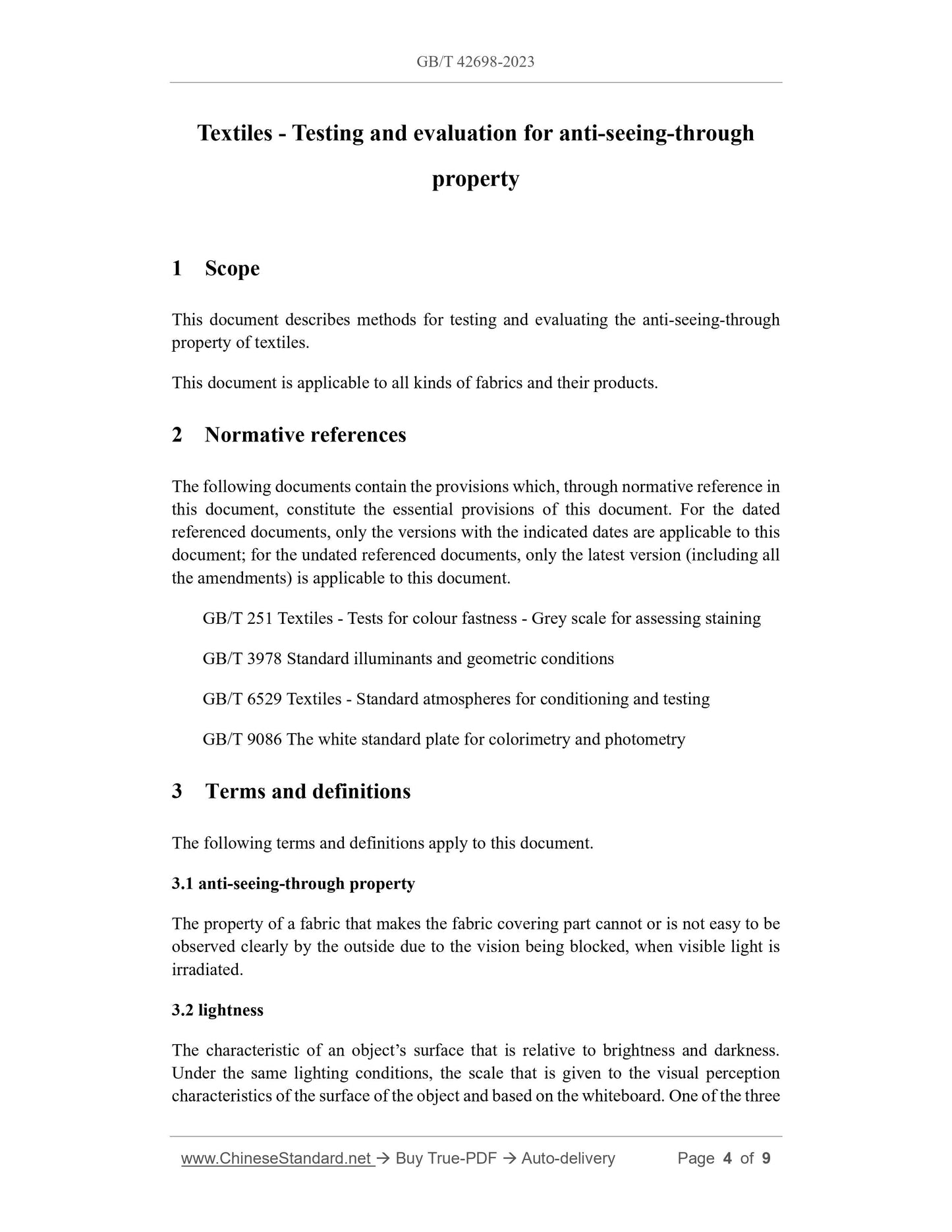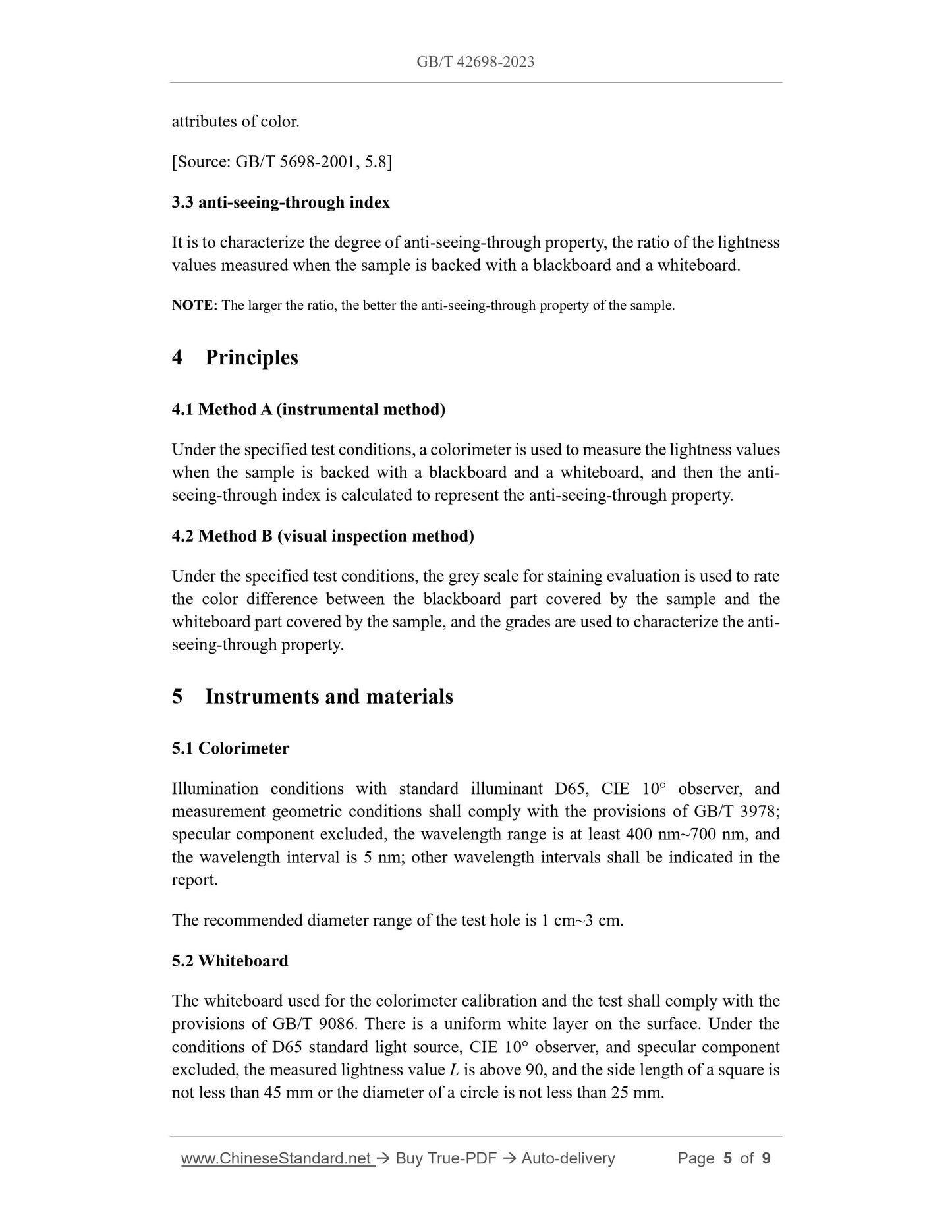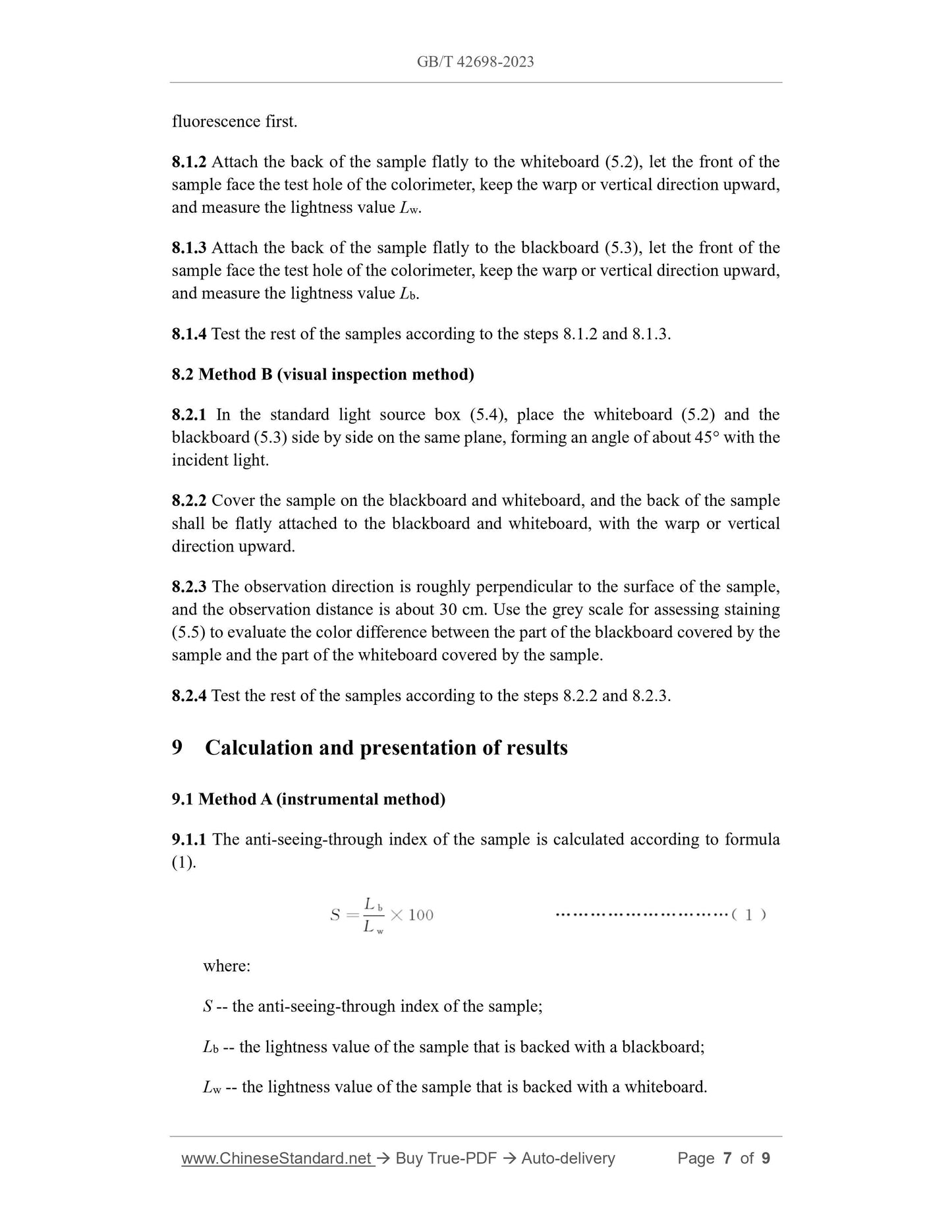1
/
of
5
www.ChineseStandard.us -- Field Test Asia Pte. Ltd.
GB/T 42698-2023 English PDF (GB/T42698-2023)
GB/T 42698-2023 English PDF (GB/T42698-2023)
Regular price
$185.00
Regular price
Sale price
$185.00
Unit price
/
per
Shipping calculated at checkout.
Couldn't load pickup availability
GB/T 42698-2023: Textiles - Testing and evaluation for anti-seeing-through property
Delivery: 9 seconds. Download (and Email) true-PDF + Invoice.Get Quotation: Click GB/T 42698-2023 (Self-service in 1-minute)
Newer / historical versions: GB/T 42698-2023
Preview True-PDF
Scope
This document describes methods for testing and evaluating the anti-seeing-throughproperty of textiles.
This document is applicable to all kinds of fabrics and their products.
Basic Data
| Standard ID | GB/T 42698-2023 (GB/T42698-2023) |
| Description (Translated English) | Textiles - Testing and evaluation for anti-seeing-through property |
| Sector / Industry | National Standard (Recommended) |
| Classification of Chinese Standard | W04 |
| Classification of International Standard | 59.080.30 |
| Word Count Estimation | 12,176 |
| Date of Issue | 2023-05-23 |
| Date of Implementation | 2023-12-01 |
| Issuing agency(ies) | State Administration for Market Regulation, China National Standardization Administration |
Share
